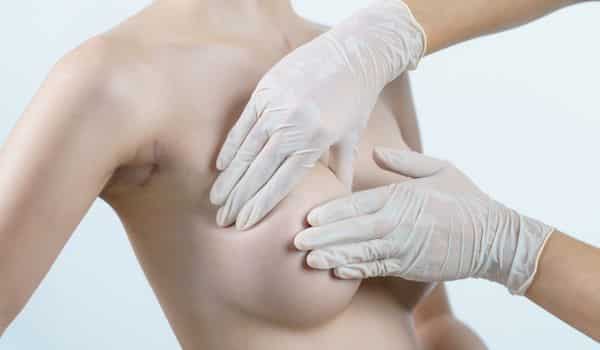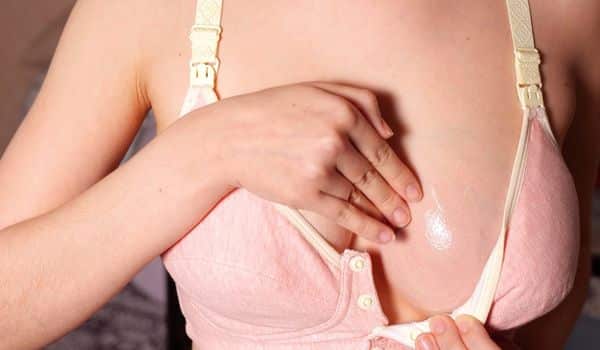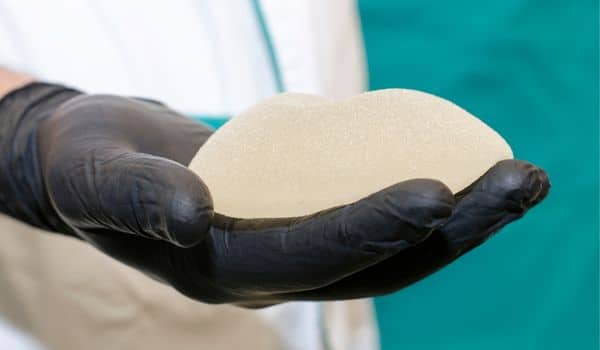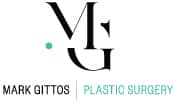Causes, Symptoms, Diagnosis and Treatment of Breast Implant-Associated Anaplastic Large Cell Lymphoma
If you have had a breast augmentation or are considering getting breast implants in the future, you may have come across the term “BIA-ALCL”. BIA-ALCL is one of the rare complications that can result from breast augmentation surgery that uses implants.
While any complications from breast augmentation are rare, it is important to be informed on the risks of any surgical procedure.
As a Specialist Plastic Surgeon, Dr Mark Gittos is an expert in cosmetic surgery of the breasts, face, and body for people of all genders, body types, and ages. Dr Gittos believes that the key to an optimal outcome from any surgical or non-surgical procedure is education, which allows his patients to make informed decisions that are right for them and their bodies. This includes providing evidence-based information about surgical risks, such as BIA-ALCL.
What Is BIA-ALCL?

BIA-ALCL, or “Breast Implant-Associated Anaplastic Large Cell Lymphoma”, is a type of lymphoma that occurs in people who have had breast implants for several years or more. The link between breast implants and lymphoma was discovered in 2011, which means that medical professionals and researchers are still trying to learn more about the disease.
BIA-ALCL is an uncommon type of non-Hodgkin’s lymphoma, which is a type of cancer that affects the cells of the body’s immune system.
What Causes BIA-ALCL?
Researchers in New Zealand and Australia are currently working to identify the cause of BIA-ALCL. At the moment, experts believe that the disease might be caused by contamination of the implants during augmentation surgery or during the initial recovery period. Sometimes, bacteria that have contaminated a surface can form a “biofilm” – a sticky layer of bacteria that can live on a surface, such as a breast implant, for a very long time. Textured breast implants, which have a less smooth surface, make it easier for a bacteria biofilm to form.
The bacterial biofilm irritates the body’s immune system, which is unable to fight off the bacteria. The immune system may respond by creating more and more immune cells, called lymphocytes. In some patients, these new immune cells can transform into lymphoma cancer cells, leading to BIA-ALCL.
How Common Is BIA-ALCL?
Medical research is still underway to determine how common BIA-ALCL is, but currently, studies have found that the risk of developing BIA-ALCL is somewhere between 1/3000 and 1/60,000 for patients who have had a breast augmentation using textured breast implants. Currently, it doesn’t seem like smooth breast implants can lead to BIA-ALCL.
How Long Does It Take To Develop BIA-ALCL?
Only a very small percentage of patients who have had breast implants will develop BIA-ALCL. This is a very rare complication, and while it is important to keep an eye out for any changes in the breasts, you should not expect that you will develop this condition after your procedure.
Studies have found that, on average, those who develop BIA-ALCL begin to have symptoms at around 8 years after receiving breast implants. Usually, if you are going to develop BIA-ALCL, this will happen no sooner than 3 years after surgery.
What Are The Symptoms Of BIA-ALCL?

Usually, people who develop BIA-ALCL will notice swelling around the breast or armpit. The swelling will usually begin mildly, and then get worse slowly over time. Other symptoms of BIA-ALCL can include:
- Enlargement of one or both breasts
- Breasts feeling firmer or “hard” to the touch
- Seeing or feeling a lump in the breast or armpit
- Breast pain, aching, or changes in sensation
- Skin irritation or skin changes on the breast
While these can be symptoms of BIA-ALCL, many medical conditions can cause lumps or swelling in the breasts, and it is very important not to ignore these symptoms. Whether you have had breast augmentation or not, you should always make an appointment to see your GP if you notice any significant changes in your breast area.
It’s important to remember that the other complications of breast implants, while still uncommon, are much more likely than BIA-ALCL. These complications, such as implant rupture, can often cause similar symptoms. If you have had a breast augmentation and experience these symptoms, contact your GP or surgeon as soon as possible.
How Do I Check My Breasts For BIA-ALCL?
There is no need to do any specific testing for BIA-ALCL unless you have noticed changes in your breasts. However, it is important to do regular checks of the breasts regardless of whether you have had breast augmentation.
Whether you have had breast implants, are considering cosmetic surgery of your breasts, or have not had any breast surgeries at all, it is very important to be aware of what “normal” looks and feels like for your chest. Dr Gittos recommends that everyone – regardless of age or gender – performs a check of the chest area about once every month.
If you menstruate, you should check your breasts during the week following your period, as breasts can become more firm, sore, and lumpy during menstruation.
You should consult your GP as soon as possible if you notice any chest or breast changes such as:
- Swelling in the breast, nipple, or armpit
- Lumps or bumps in the breast or armpit
- Nipple discharge
- A change in skin texture
- Pain
For further advice on how to perform a self-breast examination, follow the guide at the Breast Cancer Foundation’s website here.
How Is BIA-ALCL Diagnosed?

If you have symptoms that may be due to BIA-ALCL, Dr Gittos will ask you questions about your symptoms and medical history, and perform a physical exam of the breast area. Then, he may send for further investigations to find out what is causing your symptoms.
These medical investigations might include:
- An ultrasound scan of the breast to investigate any lumps or bumps you have noticed, as well as checking for swelling in the lymph nodes
- An MRI scan, especially if the ultrasound did not provide enough details
- A needle biopsy of lumps in the breasts to remove a small sample for laboratory testing
Can a Routine Mammogram Detect BIA-ALCL?
Getting regularly scheduled mammograms is a great way to detect other forms of breast cancer early, but unfortunately, BIA-ALCL will not show up on a mammogram.
What Is The Treatment for BIA ALCL?
BIA-ALCL is a very slow-growing type of cancer. It begins in the scar tissue around the implant, which is called the capsule, as well as the fluid near the implant. If symptoms are ignored or undetected, BIA-ALCL can slowly spread to the lymph nodes around the breast area or into the chest wall underneath the breasts. If the cancer spreads too much, chemotherapy or radiation therapy might be needed alongside removal of the implant and capsule.
Usually, the earlier the cancer is detected, the simpler it will be to treat. Most of the time, cases of BIA-ALCL can be completely cured by surgical removal of the breast implant and its surrounding capsule. BIA-ALCL is only fatal in very rare cases, usually if symptoms are ignored or the cancer is present for a very long time.
Is BIA-ALCL More Common With Silicone or Saline Implants?
At the moment, research suggests that the type of implant filling doesn’t make a difference in the risk of developing BIA-ALCL. There have been an equal amount of documented cases of BIA-ALCL in patients with both types of implant filling.
If you are unsure which type of breast implant filling would be best for your body, personal preferences, or preferred outcomes, you are welcome to ask Dr Gittos any questions you may have.
How can BIA-ALCL be prevented?

Dr Gittos aims to prevent bacterial contamination during any surgical procedure, including the placement of breast implants. While there is always a small risk of bacteria entering the body during invasive surgical procedures, using proper technique to prevent contamination during surgery helps to reduce the chances of a bacterial biofilm forming in the body.
Because the development of BIA-ALCL appears to only occur after breast augmentation with textured breast implants, choosing to use smooth implants is likely to be the best way to avoid BIA-ALCL. Around the world, smooth implants are becoming much more popular than textured implants – both because of the reduced risk of BIA-ALCL and because smooth implants have a much more natural “feel” through the skin.
For patients who require or prefer textured implants for their breast augmentation, choosing a less textured implant or an implant with a smaller surface area might help to reduce the risk of developing BIA-ALCL.
I Have Textured Breast Implants – Should I Have Them Removed to Prevent BIA-ALCL?
If you are not having any other issues with your textured breast implants, Dr Gittos does not recommend having breast implant removal to prevent the risk of BIA-ALCL. This is because the risk of developing BIA-ALCL is very small, and does not justify the invasive procedure of breast implant removal.
If you are very worried about developing BIA-ALCL and no longer want your textured breast implants for this reason, please discuss your concerns with Dr Gittos.
Breast implant removal may be appropriate for you if:
- Your breast implant may have ruptured
- Your implants have deflated or moved
- Breast implants are no longer compatible with your lifestyle
- Capsular contraction has occurred around the implant
- You no longer like how your breast implants look
If you have textured breast implants, Dr Gittos recommends being aware of the symptoms of BIA-ALCL, as well as performing regular breast checks. It can also be helpful to have a record of your breast implants, including key information such as:
- The serial number
- The manufacturer
- The name of the breast implant model.
You should be able to obtain this information from the plastic surgeon who performed your breast augmentation procedure, or from the clinic or hospital where your surgery was performed.
FAQs about BIA-ALCL

Why Are Textured Implants Used During Breast Augmentation?
- Textured implants are sometimes used in breast augmentation because the body’s tissue is able to “stick” to the textured surface of the implant, making it harder for the implant to shift around within the breast pocket. This reduces the risk of your breast implant moving, which is a common concern following breast augmentation. Smooth breast implants have a higher risk of shifting within the breast pocket, but they have a more natural texture through the skin, and do not increase the risk of developing BIA-ALCL. The type of breast implant that should be used during breast augmentation depends on a range of personal, physical and aesthetic factors. There is no “one size fits all” approach to any plastic surgery – and that includes breast augmentation.
Does Dr Mark Gittos Use Textured Implants?
As a leading Specialist Plastic Surgeon with extensive experience in breast augmentation, Dr Gittos provides a highly individualised approach to each augmentation he performs to create a natural, comfortable, and safe result. This includes different factors such as:
- Using saline or silicone implant filling
- Implant placement
- Implant shape and size
- Incision site
- Implant texture
Dr Gittos will discuss the type of implant that would be most suitable for you, as well as providing you with expert advice and education on the pros and cons of different implants. While occasionally, Dr Gittos decides that textured implants are the appropriate choice for his patients, the majority of his breast augmentation procedures are done using Smooth Motiva Implants. If you are concerned about the risk of BIA-ALCL or if you would like to discuss the possibility of having textured implants, Dr Gittos is happy to advise you.
Further Reading about Breast Augmentation Surgery
- Read Dr Mark Gittos’ Breast Augmentation surgery page
- See Dr Mark Gittos’ Breast Augmentation Before and After Photos NZ
- Read Dr Mark Gittos’ Breast Implants Option page
- Read Dr Mark Gittos’ What Is the Best Breast Implant Shape blog
Medical References about BIA-ALCL
- What is breast implant associated ALCL?
- Breast Implant-Associated Anaplastic Large Cell Lymphoma (BIA-ALCL)
- What Is BIA-ALCL? – Implants Special Report on BreastCancer.org
About Dr Mark Gittos FRACS (Plast) – New Zealand Plastic Surgeon
Practice locations in Herne Bay Auckland, Northland and Bay of Plenty – Kerikeri, Whangarei, New Plymouth & Tauranga
Dr Mark Gittos is a leading Specialist Plastic Surgeon and operates a practice in Herne Bay, Auckland and in the UK. The practice focuses on both surgical and non-surgical procedures, each designed to help restore, improve or change a physical characteristic or problem. The first step in every case is to talk through your personal requirements and explore all the options, before deciding on the most effective solution.
Dr Mark Gittos offers high quality, natural-looking cosmetic surgery results and is highly experienced in Breast, Body and Face Surgery having performed over 4000 Surgeries in the last 26 years. With worldwide expertise Dr Gittos is an expert in breast, face and body surgery for men & women.
Naturally, before any treatment is begun, we will explain clearly the advantages and risk factors; so that you have the information you need to make an informed decision that is best for you. Visit the practice to find out more.

NEXT STEPS
Please NOTE: Dr Gittos only performs surgery on non-smoker patients with a BMI less than 30. To check your BMI please visit the NZ Heart Foundation website. For help giving up smoking before surgery visit the Smoke Free website
Do your Research
- Read the Website and Blogs relevant to your procedure
- Browse our Frequently Asked Questions including how to choose a Surgeon for your procedure
- Download and read the FREE Guides to Surgery
What to Bring to your Plastic Surgeon Consultation
- Bring a friend or relative to help discuss the information and your choices
- Take lots of notes and read the documents provided thoroughly
- Dress in simple clothes as you may need to undress for examination
- Bring your medical referral and any relevant medical documents or test results
Book your Initial Surgery Consultation
- A Referral from your GP or specialist is helpful but NOT essential – you can have a consultation without a GP Referral
- Email us or Call on 09 529 5352 to arrange your surgeon consultation appointment.
- Book a consultation with Dr Gittos by paying the Consultation Fee – $325 incl GST
Traveling for Surgery? – Consider post-surgery luxury recovery in a Hotel with LuxeCare
Please contact us to arrange to book a consultation with our Specialist Plastic Surgeon or to speak with our Patient Care Advisor.
Send an enquiry form today or phone 09 529 5352 during Clinic Hours.
